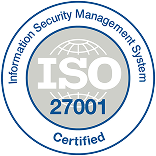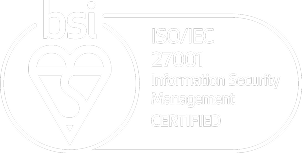EU AI Act 2025 → 2026 The Complete Guide to Compliance and How SureCloud Helps You Get There
Updated October 2025
The EU Artificial Intelligence Act (EU AI Act) is now in force. Most rules take effect by August 2, 2026, with a few extended to August 2, 2027. This late-2025 refresh explains what changed since early 2025, what matters in 2026, and how to meet AI compliance requirements without overbuilding. You’ll see where to start, which controls regulators expect, and a clear path from obligations to evidence. We’ll also show how SureCloud turns the plan into daily work—centralizing your AI register, controls, supplier evidence, and reporting—so you’re ready for 2026.

What Is the EU AI Act? (2025 → 2026 refresher)
The EU AI Act, also called the European AI Act, is the first major law to set shared rules for how AI is built, used, and governed across Europe
Proposed in 2021 and adopted in 2024, it is now in force and phasing in through 2026, with limited extensions into 2027. The Act is extraterritorial in practice: if you place AI systems on the EU market or your AI outputs affect EU users, you’re likely in scope.
For key dates, see the official EU AI Act implementation timeline.
Its goals remain clear:
- Promote safe, trustworthy, and transparent AI development
- Ensure accountability for how AI is designed and used
- Protect citizens from harmful or high-risk applications
- Foster innovation through clear and consistent rules
What’s new since the last version (late-2025 snapshot)
- Article 5 bans are active: Since February 2, 2025, listed practices are prohibited, with guidance sharpening early enforcement priorities (e.g., manipulative techniques, social scoring, certain biometric uses, emotion recognition in sensitive settings).
- GPAI Code of Practice (July 10, 2025): Voluntary guidance to help model providers align while binding rules phase in.
- Governance ramp-up: The AI Board is coordinating national authorities and advising on implementing acts and guidance; expect more detail throughout 2026.
- Timeline clarity: Staged obligations run into 2026–2027; high-risk duties become enforceable around August 2, 2026 (with some extensions to August 2, 2027).
Core Principles and Risk-Based Framework (with 2026 lens)
The EU AI Act classifies AI systems into four risk categories, each with different compliance obligations.
Unacceptable Risk (Prohibited):
Examples: manipulative systems that exploit vulnerabilities, social scoring by public authorities, biometric categorization based on sensitive attributes, untargeted facial-image scraping for recognition databases, and emotion recognition in workplaces or schools.
Note: real-time remote biometric identification in public spaces by law enforcement isn’t a blanket ban; it is permitted only in narrowly defined serious cases with strict safeguards.
High Risk (Heavily Regulated):
Listed contexts such as safety components (e.g. medical devices), critical infrastructure, employment, migration/asylum, education, and access to essential services. These trigger strict requirements across risk management, data governance, documentation, human oversight, accuracy/robustness/cybersecurity, and post-market monitoring.
Limited Risk (Transparency Obligations):
Transparency duties (e.g., clearly signaling user interaction with AI such as many chatbots; labeling synthetic media in certain contexts).
Minimal Risk (Few or No Requirements):
Everyday uses like spam filtering that don’t add obligations beyond general EU law.
Prohibited practices (Article 5): quick enforcement checklist
Regulator first checks (what draws scrutiny):
- Emotion recognition in workplaces/schools or any social scoring use.
- Biometric uses without a clear lawful basis/safeguards.
- Missing intended purpose, risk records, or oversight design.

Have ready:
- One-paragraph intended purpose per system + why it’s not Article 5.
- Dataset/source provenance (no indiscriminate facial-image scraping).
- Oversight/authorization trail for any biometric or law-enforcement-adjacent scenario, plus an incident log.
What Businesses Must Know in 2025
The European AI Act affects a wide range of organizations, including:
- Providers – those who develop or place AI systems on the EU market
- Deployers – companies that use AI in their operations
- Importers/Distributors – those who bring AI systems into the EU
EU AI Act Timeline - Key Enforcement Dates
- August 1, 2024 — EU AI Act enters into force
- February 2, 2025 — Prohibited AI practices ban takes effect
- May 1, 2025 — Voluntary codes of practice become available
- August 1, 2026 — High-risk AI obligations (Annex III) become enforceable
- August 1, 2027 — Additional obligations for certain Annex I systems
Staying ahead of this EU AI Act timeline is critical for budgeting, staffing, and technology decisions.
The Act is enforced by national supervisory authorities, overseen by the European AI Board. Penalties for serious breaches can reach €35 million or 7% of global annual turnover — whichever is higher.
Key Requirements for High-Risk AI Systems
High-risk AI systems are subject to more stringent AI compliance requirements.
Providers must:
- Implement a full risk-management system
- Ensure data quality and traceability
- Ensure third-party and GPAI vendors follow the same risk checks and record-keeping you use in-house
- Maintain technical documentation and audit-ready records
- Provide clear instructions and transparency to users
- Maintain human oversight at key decision points
- Ensure system accuracy, robustness, and cybersecurity
Checklist — Key Actions for High-Risk AI Systems
- Conduct internal risk assessments
- Establish and monitor controls
- Maintain detailed documentation
- Support independent audits
- Train teams in human oversight responsibilities
Note: Apply the same risk checks and documentation standards to any third-party or GPAI vendors feeding data or models into your AI stack.
What Businesses Must Know as 2026 Approaches
- Roles & Scope: The EU AI Act applies to providers, deployers, importers, distributors, and product manufacturers placing, making available, or using AI systems in the EU market. It is extraterritorial (it can apply to non-EU organizations whose AI affects EU users).
- Coordination & Supervision: Expect continued coordination via the EU AI Board alongside national supervisory authorities.
- Penalties & Market Access: Upper bounds include €35m/7% (prohibited practices), €15m/3% (other violations), and €7.5m/1.5% (certain misstatements). Evidence-ready records will matter as supervision scales toward August 2026.
Key Requirements for High-Risk AI Systems
If you classify a system as high risk under the EU AI Act, you must implement and be able to evidence the following:
- Risk management system (Art. 9) — owners and cadence; identify, analyze, evaluate, treat; record decisions and rationales.
- Data governance & traceability (Art. 10) — dataset acceptance criteria; lineage and representativeness; bias/quality tests; documented limitations.
- Technical documentation (Art. 11–13) — intended purpose; system description/architecture; training-validation-test summaries; logging schema; keep it current and centralized.
- User instructions & transparency (Art. 13) — instructions for safe use; limitations and expected performance; any user-facing disclosures that apply.
- Human oversight (Art. 14) — explicit intervention/override points, escalation, and operator training.
- Accuracy, robustness & cybersecurity (Art. 15) — target performance; pre-release and periodic tests; adversarial checks; drift monitoring.
- Logging & record-keeping — event logs for key operations and decisions; integrity controls; retention for audits/investigations.
- Post-market monitoring & incident reporting — issue capture; corrective actions; serious-incident reporting.
- Third-party & GPAI dependencies (2026 emphasis) — track model families/services, licenses, restrictions; collect supplier evidence (safety, security, data governance). See the GPAI Code of Practice for provider alignment.
- Change management — re-assess when purpose, model, data, or deployment
How to Assess and Classify Your AI Systems
Make your process repeatable and auditable. Here's where to start:
- AI inventory: Catalog all systems/services, including embedded/vendor AI.
- Intended purpose: One clear paragraph per system: who it serves, decisions it informs/makes, limits and guardrails.
- Classify risk: Map to AI Act tiers with rationale; flag likely high-risk uses for deeper controls.
- Lineage & dependencies: Record model lineage, datasets, vendors, licenses, and restrictions (esp. GPAI/foundation models).
- Oversight design: Intervention points, escalation, roles, training.
- Internal audits: Review classification, testing evidence, logging; report to governance committees.
- Cross-functional governance: Involve risk, security, privacy, legal, product, and data science.
SureCloud Tip: Use a single register to track model lineage, datasets, vendors, and oversight roles. It shortens audits and improves conformity assessments—core to EU AI Act 2025–26 readiness.
Building a Roadmap to Compliance
Use a phased plan so teams know what to do, when, and what evidence to keep as the EU AI Act phases in.
- Aug 2, 2024 — Entry into force
- Feb 2, 2025 — Prohibited practices applicable
- Mid/Late 2025 — Commission guidance updates; July 10, 2025 GPAI Code of Practice (voluntary)
- Aug 2, 2026 — High-risk obligations enforceable
- Aug 2, 2027 — Additional obligations for certain embedded high-risk systems
Phase 1 — Foundations (now → Q1 2026)
- Register & classify every AI system; add a one-paragraph intended purpose with scope/limits.
- Centralize technical documentation and instructions for use; enable event logging for key operations.
- Define human-oversight checkpoints (who intervenes, when, and how).
- Run initial accuracy/robustness/cybersecurity tests and record results/limitations.
Evidence to keep: register entries, intended-purpose statements, doc set index, logging design, test summaries.
Phase 2 — Prove control (Q2–Q3 2026)
- Mature data governance (dataset acceptance criteria, lineage, bias-testing cadence).
- Stand up post-market monitoring (issue intake, corrective actions, serious-incident triggers).
- Start/extend third-party & GPAI supplier due diligence (attestations, artifacts, use restrictions) — use the GPAI Code of Practice as optional alignment support.
- Use dashboards to track control status, open actions, and exceptions.
- Evidence to keep: dataset lineage and test evidence, PMM records, supplier questionnaires/attestations, control status reports.
Phase 3 — Continuous governance (late 2026 → 2027)
- Move to scheduled control testing and periodic model reviews; re-assess on purpose/model/data/deployment change.
- Maintain a living risk register and oversight record; keep audit-ready logs/artifacts mapped to obligations.
- Monitor guidance/implementing measures and adjust templates/controls with minimal rework.
- Evidence to keep: control test results, change assessments, management reports, incident logs, remediation tracking.
Operationalizing AI Act Obligations with a Management System
The Act defines what outcomes are required; a management system defines how you deliver them consistently across teams, releases, and audits.
Alignment crosswalk:
- Art. 9 (Risk Management) → governance process, risk register, oversight committees/cadence.
- Art. 10 (Data Governance) → dataset acceptance criteria, lineage tracking, bias tests, traceability.
- Art. 11–13 (Documentation & Transparency) → technical documentation, instructions for use, logs.
- Art. 14 (Human Oversight) → intervention points, override procedures, operator training.
- Art. 15 (Accuracy/Robustness/Cybersecurity) → testing regime, drift monitoring, security controls.
Operating rhythm:
- Cadence: quarterly risk reviews; monthly control checks for high-impact systems.
- Ownership: named owners for each requirement and each control; clear escalation paths.
- Change triggers: re-assess on material model/data/purpose/deployment changes.
- Exceptions: capture, approve, and time-bound remediation; track to closure.
- Audit pack: one click (or single bundle) of intended purpose, classification, docs, logs, tests, PMM records.
Why this matters: a management-system approach makes audits and conformity assessments repeatable and scalable for both providers and deployers.

How SureCloud Streamlines EU AI Act Compliance
SureCloud helps you move beyond spreadsheets and manual processes to meet AI compliance demands with less effort and more confidence.
SureCloud’s Core Capabilities for AI Compliance
- AI inventory & risk categorization: maintain a live register of systems, intended purpose, classification status, GPAI dependencies, and oversight roles.
- Control workflows: configurable control sets aligned to AI Act obligations; owners, due dates, reminders.
- Evidence capture: centralize dataset tests, oversight logs, instructions, and risk decisions into audit-ready records.
- Policy lifecycle: manage versions, approvals, and attestations across teams.
- Audit-ready reporting: real-time dashboards and reports to visualize progress and surface exceptions.
- 2026 readiness: GPAI supplier questionnaires and configurable control sets to operationalize third-party oversight.
- Integrated GRC: connect AI obligations with enterprise risk, issues, and audits—your practical AI governance platform.
Explore Risk Management, Third-Party Risk Management, and our Frameworks hub.
Europe AI Act vs Other Global AI Rules
- EU (EU AI Act): Binding, risk-based regulation with staged applicability through 2026–2027 and significant penalties. Extraterritorial in practice when EU users are affected.
- UK: “Pro-innovation,” regulator-led approach (guidance first, sector-by-sector). No single omnibus act. UK firms serving EU users may still need to comply with the EU AI Act.
- US: Agency-led and sectoral (e.g., consumer protection, health, finance) plus federal guidance; no single nationwide AI statute.
- OECD: Non-binding AI principles widely referenced by governments and standards bodies; helpful for convergence but not enforceable.
2026 Outlook: Enforcement, Guidance, and Trends
- More official guidance. Expect further documents and coordination via the Commission and the AI Board that clarify documentation, testing, oversight, and post-market expectations. Early supervisory actions are likely to shape how requirements are interpreted.
- GPAI adoption signals. Watch how model providers use the GPAI Code of Practice (voluntary) and whether updates emerge as obligations mature. This can inform what evidence downstream deployers request.
- Harmonized standards & implementing acts. Track standards activity (e.g., under Article 40). When finalized and cited, following a harmonized standard can provide presumption of conformity for covered requirements—reducing interpretation risk and audit friction.
Practical takeaway: Move from “project compliance” to continuous governance—defined controls, measurable checks, reliable logging, supplier evidence on a cadence, and fast re-assessment when purpose/model/data change.
Frequently Asked Questions
Who needs to follow the EU AI Act?
Any organization that builds, deploys, or sells AI that affects EU users, even if based outside Europe. SureCloud supports global teams in aligning with EU requirements, no matter where they operate.
What happens if we don’t comply?
Fines of up to €35 million or 7% of global turnover, plus the risk of lost trust and reputational damage. SureCloud reduces your risk exposure with structured governance and audit-ready records.
Are there tools that can help with compliance?
Yes. SureCloud’s GRC platform helps you automate AI risk classification, track obligations, and manage documentation all in one place. You can also map, test, and monitor controls to stay audit-ready. With built-in third-party and data privacy risk management solutions, SureCloud helps ensure your compliance extends across both internal systems and external vendors.
Does the EU AI Act apply to the UK?
Yes. UK companies serving the EU must meet these requirements. SureCloud ensures your systems are aligned with EU law, regardless of where your business is based.
What does human oversight mean?
People must be able to intervene and override AI decisions when necessary. SureCloud helps document oversight roles and responsibilities, keeping you aligned with the Act.
What changed since early 2025?
Article 5 prohibitions apply from February 2, 2025; the GPAI Code arrived July 10, 2025; most high-risk duties become enforceable around August 2, 2026, with limited extensions into August 2, 2027. See the EU AI Act timeline.
How do providers vs deployers prepare for August 2026?
Providers: documentation, testing, and post-market monitoring.
Deployers: intended purpose, oversight, logging, and records tied to outcomes.
What is the GPAI Code of Practice?
Voluntary guidance for model providers; helpful to structure evidence and transparency while rules settle.
How do we manage third-party and foundation-model risk?
Treat external models like internal ones: include in your register, define intended purpose, track lineage and limits, collect supplier evidence, and log oversight/testing.
Does the EU AI Act apply to the UK or non-EU firms serving EU users?
Yes. If you place systems on the EU market or your output affects EU users, obligations may apply. See What Businesses Must Know for scope details.
What documentation do regulators expect first?
An intended-purpose statement, risk classification, technical documentation, instructions for use, oversight design, testing records, and logs; all organized to match European AI Act obligations.
Ready to Comply? Here’s Your Next Step

The path to 2026 is clear: inventory and classify every system; operationalize governance around the Act’s outcomes; and prove what you do with consistent records. If your operations touch the EU, even from the UK or US, assume scope and move now. See how SureCloud centralizes your EU AI Act controls, evidence, and reporting in one place.
.png)








_HighPerformer_Enterprise_HighPerformer.png)








